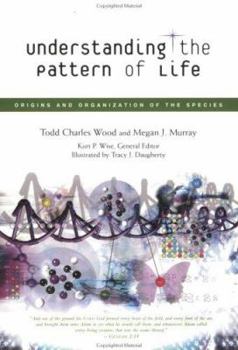Understanding the Pattern of Life: Orgins and Organization of the Species
"From the Preface of "Understanding the Pattern of Life": 'I pray that what you are about to read will be unlike any creationist book that you have ever read. It has never been my intention to write... This description may be from another edition of this product.
Format:Paperback
Language:English
ISBN:0805427147
ISBN13:9780805427141
Release Date:January 2003
Publisher:B&H Publishing Group
Length:231 Pages
Weight:0.95 lbs.
Dimensions:0.5" x 7.1" x 10.0"
Customer Reviews
2 ratings
Understanding the Pattern of Life-A Great Introduction to Baraminology
Published by Thriftbooks.com User , 15 years ago
Understanding the Pattern of Life by Todd Charles Wood is a great introduction to the discipline of baraminology, the alternative creationist approach to classifying organisms. I have studied the evolution_creation debate for about thirty years now but had never heard of baraminology until reading this book. Very informative and in depth analysis of the discipline started by F Marsh. Good examples and explanations of difficult concepts. If you are looking for a technical treatment of "creationist zoology", this is a good treatise.
Change the Way You View Biology
Published by Thriftbooks.com User , 19 years ago
This is one of the most original biosystematics book available. It takes a completely different perspective from any other. Until now, the majority of creationist books on the market have been mostly criticisms of Darwin. While some of these have been quite good, there have been few books of substance that answers the question, "how do you do biology from a creationist perspective?" Rather than being critical of other approaches, this book sets out to describe how scriptural biology can completely change your perspective on biological systems. At its essence, this is a creationist biosystematics book. But even more, it shows how a believing God transforms how a scientist views the world. The start of the book is slow, but it gets progressively more interesting. The terminology is a bit wierd, but this isn't abnormal for systematics. The opening chapters present the kinds of classifications used as well as the kinds of evidences used for classifications. It then presents statistical methods for creationist classification, including BDIST and ANOPA, both of which are statistical methods for finding patterns of sameness and difference between species. The end of the book is the best, covering special topics of interest, including biological imperfection, biodiversity, and biogeography. My favorite chapter of the whole book was the biodiversity chapter, which discusses the diversification mechanisms which creationists believe are at play. The most interesting of these is genomic modularity -- the hypothesis that genomes are preprogrammed to rearrange themselves in response to specific environmental stresses. Several very good examples are given. To give you a little spoiler, one of the things that this book does is set up both continuity and discontinuity as real, fundamental features of biology, and sets up ways of analyzing them from a unique, creationist perspective. While not being a perfect book, this is a must-read for anyone who wants to know, "what is it that creationists believe". If you are a creationist, this book is a must-read. If you are an evolutionist and simply want to know, "what on earth do creationists think" this is also the book for you.





